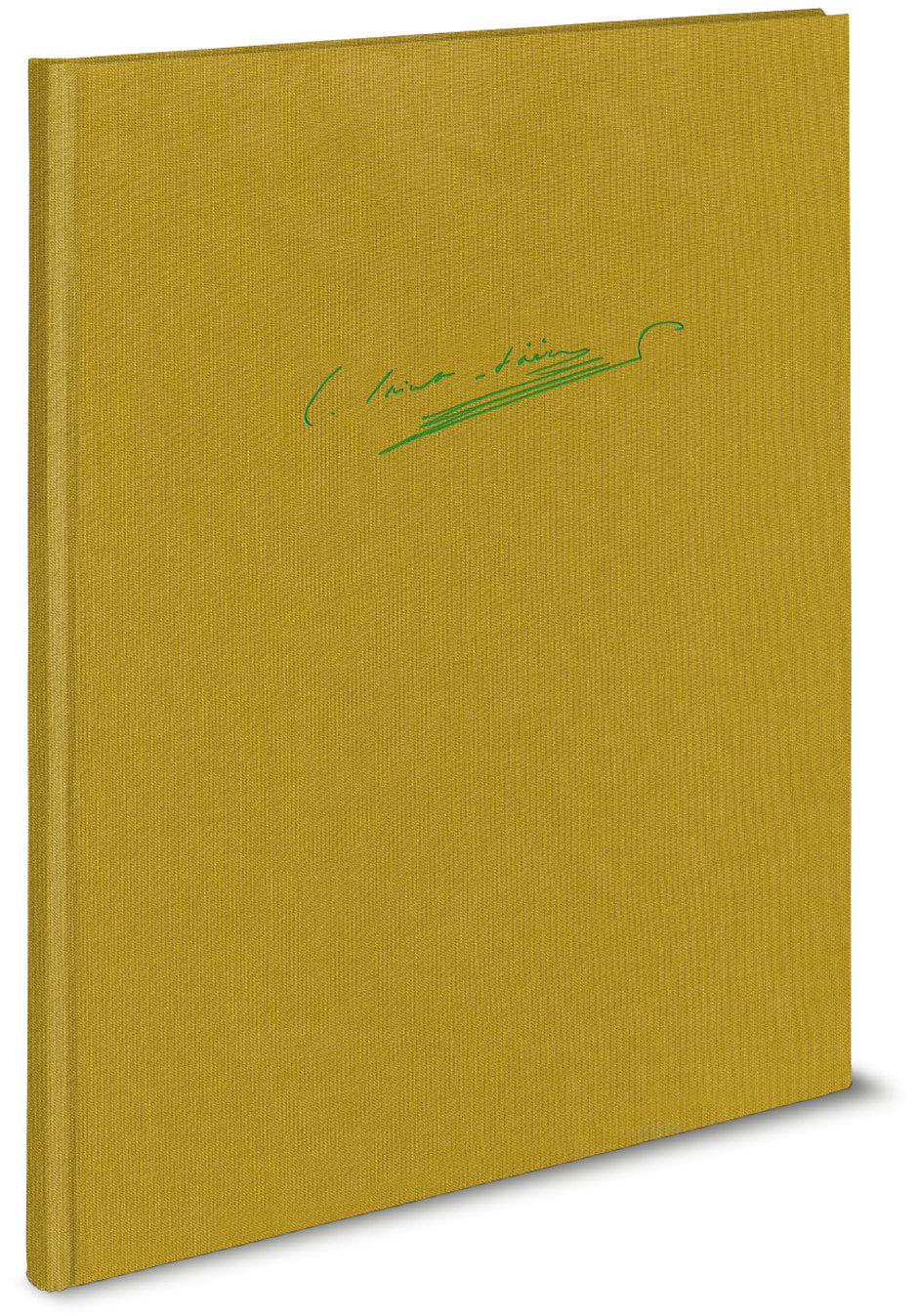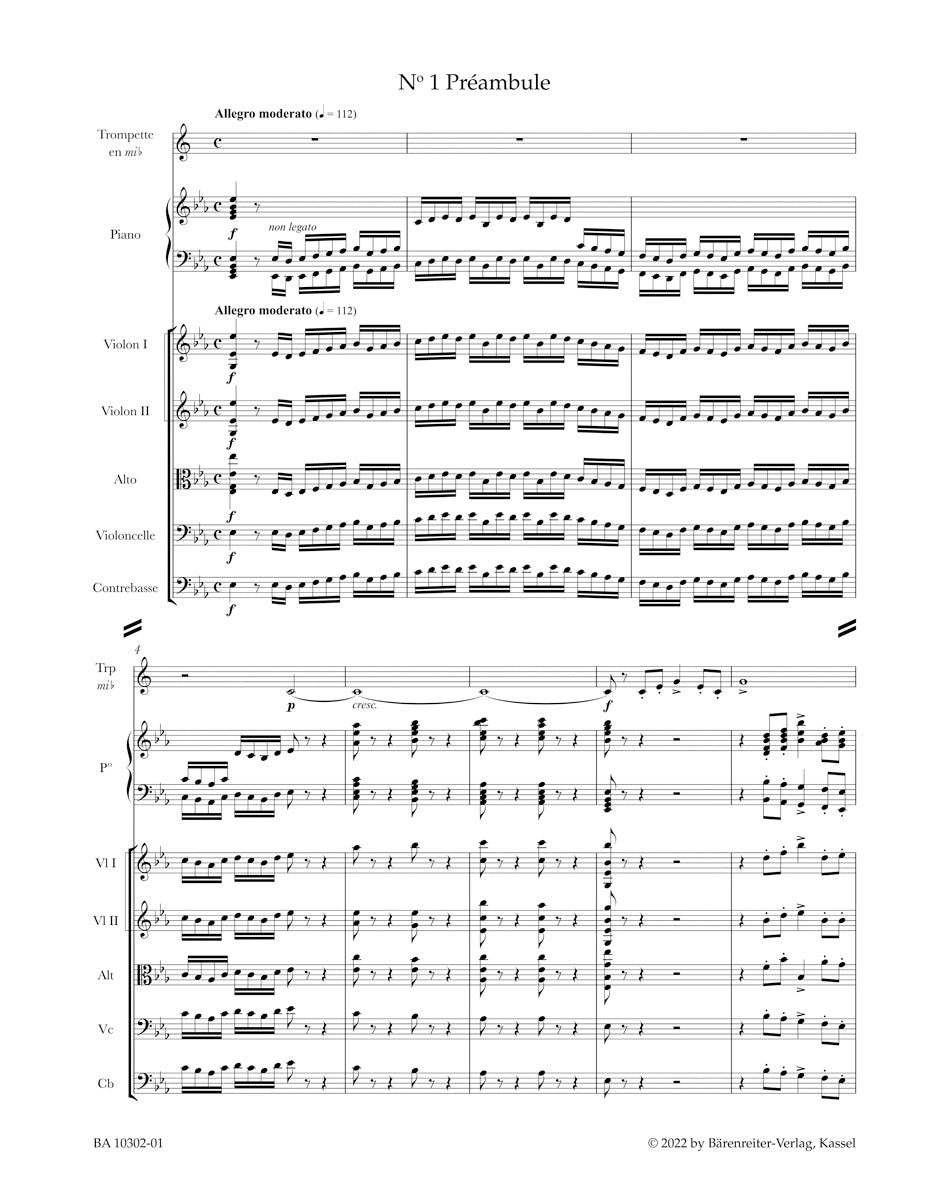Saint-Saëns: Septet in E-flat Major & The Carnival of the Animals
Expected to ship in about a week.
- Composer: Camille Saint-Saëns (1835-1921)
- Format: Full Score
- Instrumentation: Cello, Piano, Clarinet, Double Bass, Flute, Viola, Violin I, Violin II, Piano I, Piano II, String Orchestra, Trumpet, Glass Harmonica, Xylophone
- Binding: Hardcover
- ISMN:
- Size: 10.2 x 13.0 inches
- Pages: 138
- Urtext / Critical Edition
Description
Both works included in this volume – "Septuor", Op. 65 and "Le Carnaval des animaux" – lead a double life between chamber music and ensemble/orchestral music. Saint-Saëns wrote them originally as chamber music with only one musician to each string part, but already at the premiere of the "Septuor" the string quartet was doubled – much to the composer's delight. The new critical edition brings this rarely used instrumentation back into memory.
Saint-Saëns seems to have had reservations towards his "Carnival of the Animals" which is generally viewed as one of his most ingenious compositions and certainly his most famous one, countlessly cited, arranged and transcribed. in a codicil to his will, he stipulated that the complete full score could only be published after his death. He excluded solely "Le Cygne". Apparently he feared that the audience would judge his oeuvre by the "Carnival" and disregard his more serious works.
This volume, published as a part of the series "Oeuvres instrumentales complètes", presents the fourteen individual movements based on the few authentic sources. for the first time, the editor identifies all musical citations which are used as parodies or travesties and includes them as an addendum to her detailed introduction which throws a light on the works' genesis and reception and offers notes on interpretation.
Works:
- Septet in E-flat Major, Op. 65
- Le carnaval des animaux (The Carnival of the Animals), R 125
Publishers use a lot of words to describe what they sell, and we know it can be confusing. We've tried to be as clear as possible to make sure you get exactly what you are looking for. Below are descriptions of the terms that we use to describe the various formats that music often comes in.
Choral Score
A score for vocalists that only contains the vocal lines. The instrumental parts are not there for reference. Generally, cheaper than a vocal score and requires multiple copies for purchase.
Facsimile
Reproductions of the original hand-written scores from the composer.
Full Score
For ensemble music, this indicates that the edition contains all parts on a single system (there are not separate parts for each player). In larger ensembles, this is for the conductor.
Hardcover
Hardbound. Generally either linen-covered or half-leather.
Orchestral Parts
Similar to a wind set, this is a collection of parts. In the case of strings, the numbers listed are the number of copies included, though generally these are available individually (often with minimum quantities required).
Paperback
When publishers offer multiple bindings (e.g. hardcover) or study scores, this is the "standard" version. If you're planning to play the music, this is probably what you want.
Performance / Playing Score
A score of the music containing all parts on one system, intended for players to share. There are not separate parts for each player.
Set of Parts
For ensemble music, this indicates that there are separate individual parts for each player.
Solo Part with Piano Reduction
For solo pieces with orchestra, this is a version that contains a piano reduction of the orchestra parts. For piano pieces, two copies are typically needed for performance.
Study Score
A small (think choral size) copy of the complete score meant for studying, and not playing. They make great add-ons when learning concertos and small chamber works.
Vocal Score
A score prepared for vocalists that includes the piano/organ part or a reduction of the instrumental parts.
Wind Set
For orchestral music, this is a collection of wind and percussion parts. The specific quantities of each instrument are notated.
With Audio
In addition to the printed music, the edition contains recordings of the pieces. This may be an included CD, or access to files on the internet.
With / Without Fingering (Markings)
Some publishers prepare two copies - a pure Urtext edition that includes no fingering (or bowing) suggestions and a lightly edited version that includes a minimal number of editorial markings.




